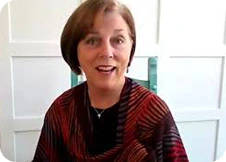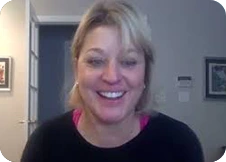In Q3 2023, the average down payment on a home was 14.5%. A first-time homebuyer pays an average of 6% as a down payment, and a repeat buyer pays 17%.
However, your down payment need not be the same as the national average. It depends on multiple factors and can impact the terms of your mortgage.
📉 Down Payment on a House
- A larger put-down value may help you get lower interest rates on the mortgage.
- Various down payment assistance programs can help you get funds for upfront payments on the house.
- Your down payment gets deposited into an escrow account. A settlement agent is responsible for the management of the account.
What Is a Down Payment?
The down payment is an upfront cost of home ownership that you pay in a real estate transaction. It is a percentage of the home’s total purchase price, not the entire amount.
A typical down payment on a house can range from as low as 3% to as high as 20%. Usually, the type of mortgage you choose determines your put-down value. Apart from this, your financial situation and property type also play a role.
How Do Down Payments Work?
The amount you put down as an upfront payment can influence several aspects of your mortgage repayment process. A larger down payment will allow you to buy a bigger house or get lower interest rates.
Mortgage lenders refer to the lending amount as the Loan-To-Value ratio (LTV). For example,
- If you put down 3% on a $500,000 house, your put-down value will be $15,000, and your LTV will be 97%.
- If you put down 20% on a $500,000 house, your put-down value will be $100,000, and your LTV will be 80%.
You deposit the down payment into an escrow account. A real estate attorney or a settlement officer is responsible for the escrow account. The job of this third-party entity is to pay the seller upon the closure of the deal.
How Would a Bigger Down Payment Be Beneficial to the Borrowers?
A larger put-down value reduces the interest payments and the overall cost of a mortgage. Some other benefits include:
Low-Interest Payments
A larger down payment reduces your principal loan amount. It also lowers your monthly mortgage and interest payments.
No Need for Mortgage Insurance
In most cases, you have to pay mortgage insurance when you put down less than 20%. However, you can avoid mortgage insurance if you put down 20% on a conventional loan. You can pay this premium monthly or upfront with your down payment.
Low Debt-To-Income Ratio (DTI)
A DTI represents how much of your income goes toward debt payments. Lenders usually prefer a DTI of 45% or lower. Putting down more on the property purchase can help maintain a lower DTI and allow you to get the best terms on a mortgage.
How Would a Smaller Down Payment Be Beneficial to the Borrowers?
Putting down less money allows you to save for other financial objectives, including:
More Money for Repairs and Renovations
You may have to encounter a few repairs and renovations once you become the owner of your new home. Henceforth, it’s better to save money for these expenses instead of putting down a bigger payment.
Money for Emergency Situations
It’s advisable to save money for unforeseen situations rather than spend extra money on the house.
Money for Other Ventures
A larger upfront payment gives you lower interest rates and monthly payments. However, it’s advisable to use it toward other priority expenses, such as college tuition or investments.
What’s the Average Down Payment on a House?
NAR’s data suggests that a first-time home buyer pays a down payment of 6%, whereas a repeat buyer pays 17%. The median purchase price of a house was $430,300 in Q3 2023.
It’s possible that your down payment differs from the above figures. This is due to multiple factors that affect down payment requirements, such as the type of loan, the price of the property, and market conditions.
Find Homes for Sale Under Your Specific Budget
Does Down Payment Affect Interest Rate?
Your put-down value on a house impacts the interest rates that your lender offers you. The higher the put-down value, the more likely it is to get lower interest rates. This is so because a larger down payment indicates a lower credit risk for the borrower.
What Is Down Payment Assistance?
Down payment assistance (DPA) programs help buyers with their upfront payments while buying a house. This assistance can be in the form of grants, repayment-free loans, and other financial aid. Currently, there are more than 2,000 active DPAs across the country.
Although DPAs can help you get assistance with down payments, you must be eligible for the aid. Some programs are only available to first-time buyers, and some have minimum credit score requirements. So, it’s better to ensure that you meet all requirements.
Bottom Line
A down payment acts as a head start on your loan. Understanding how much down payment for your house you can afford is crucial. It can help you plan for other financial obligations without affecting your emergency funds.
The amount of your down payment depends on multiple factors, such as the type of loan, the type of property, and your financial capability.
Frequently Asked Questions
What is the minimum down payment for a house?
The minimum down payment for a house is 3.5% on an FHA loan.
How not to pay a down payment?
Government-backed loans such as USDA loans and VA loans offer no-down-payment loans.
Can I borrow money for my down payment?
Borrowing money for a down payment is not a good idea and is generally not possible with many lenders. However, you may enroll in down payment assistance programs to get aid for down payments.
Why do mortgage lenders require a down payment?
Lenders require a down payment is that it lowers the risk of borrowers defaulting on payments. A larger down payment means lower interest and principal.
What is the average down payment on a house for a first-time buyer?
On average, a first-time home buyer pays a 6% down payment.
Find Your New Home With Houzeo
With thousands of property listings, Houzeo.com is one of the biggest property listing sites in the US. Find condos, townhouses, co-ops, and other types of homes for sale on Houzeo.














.webp)
